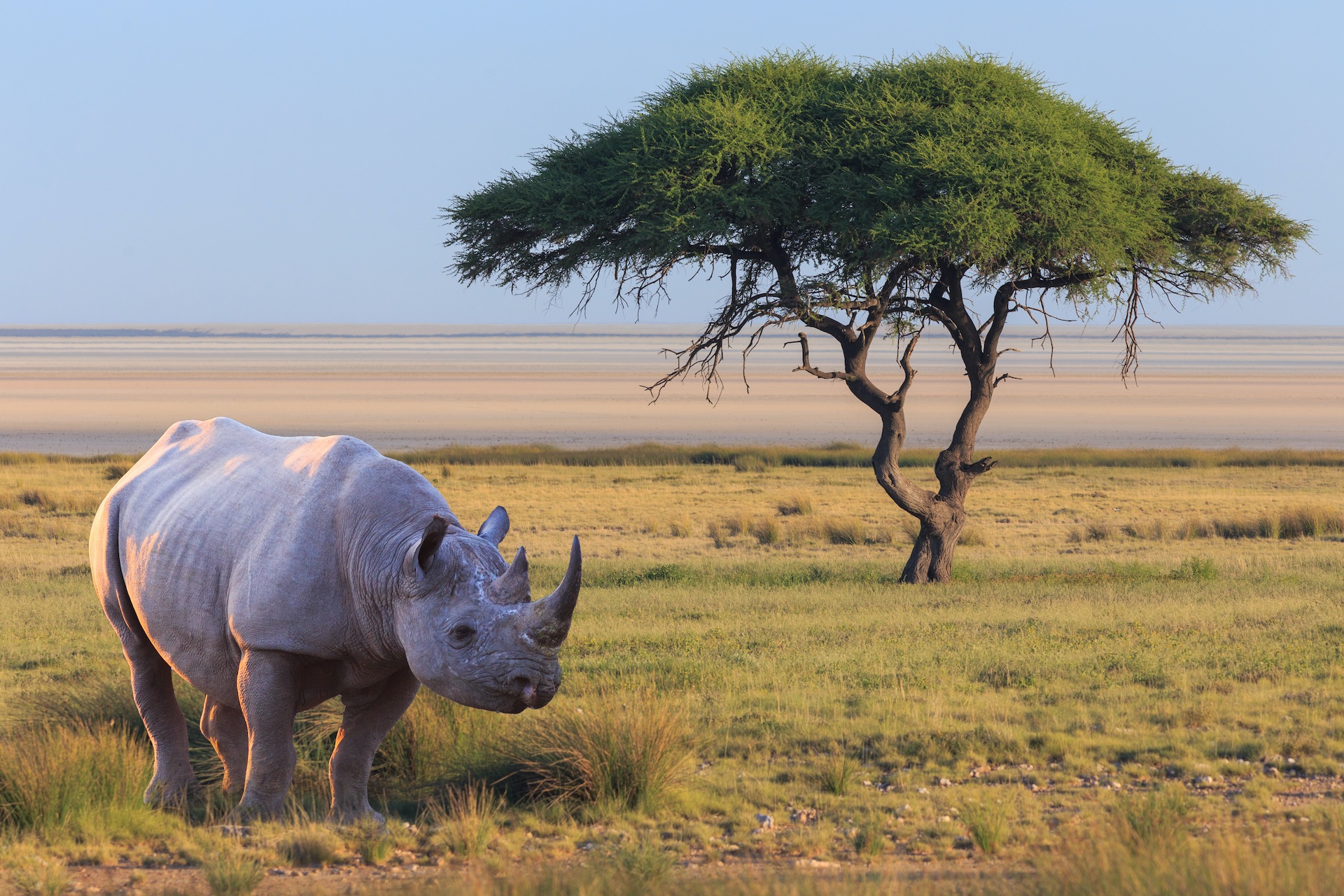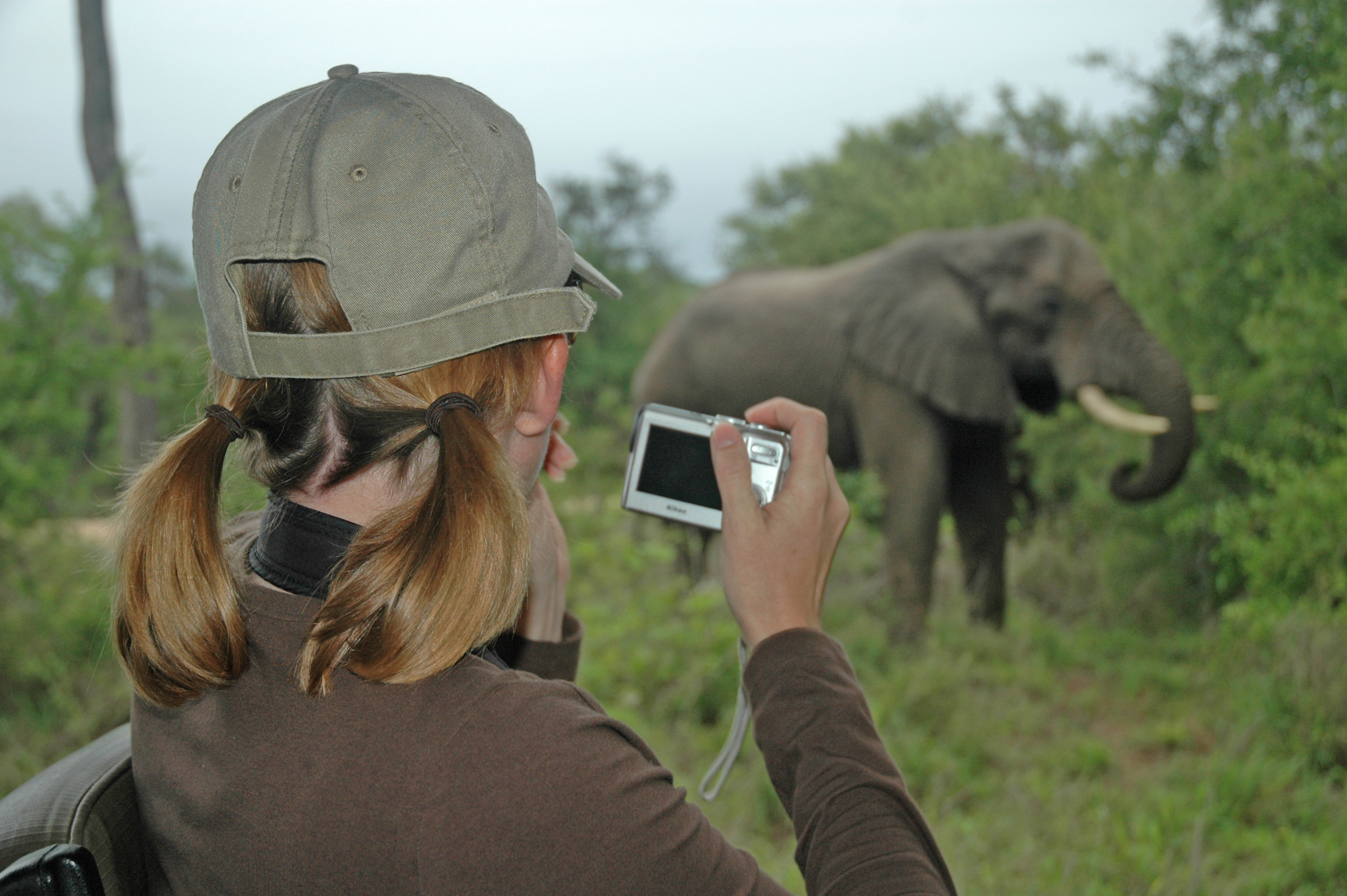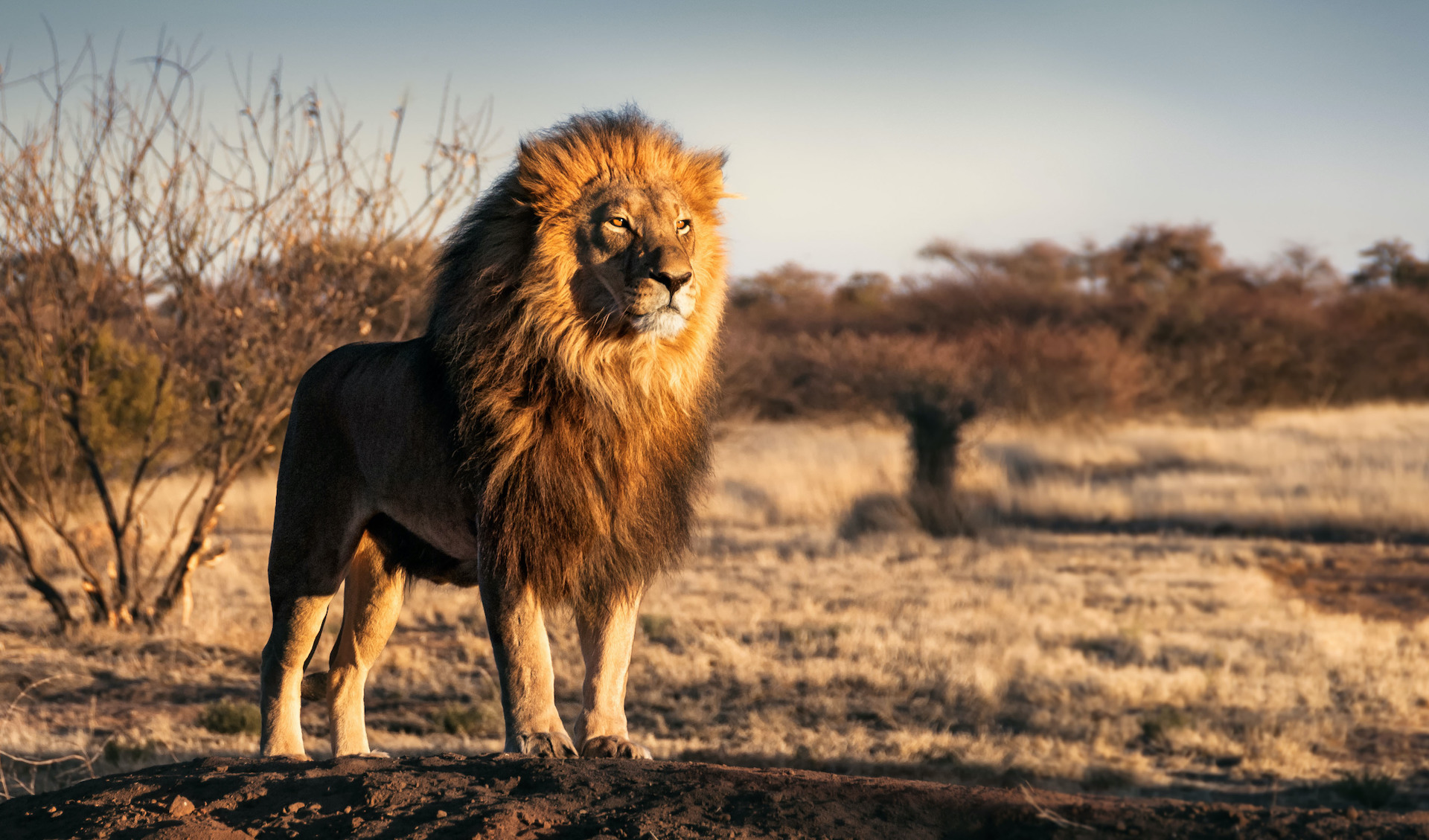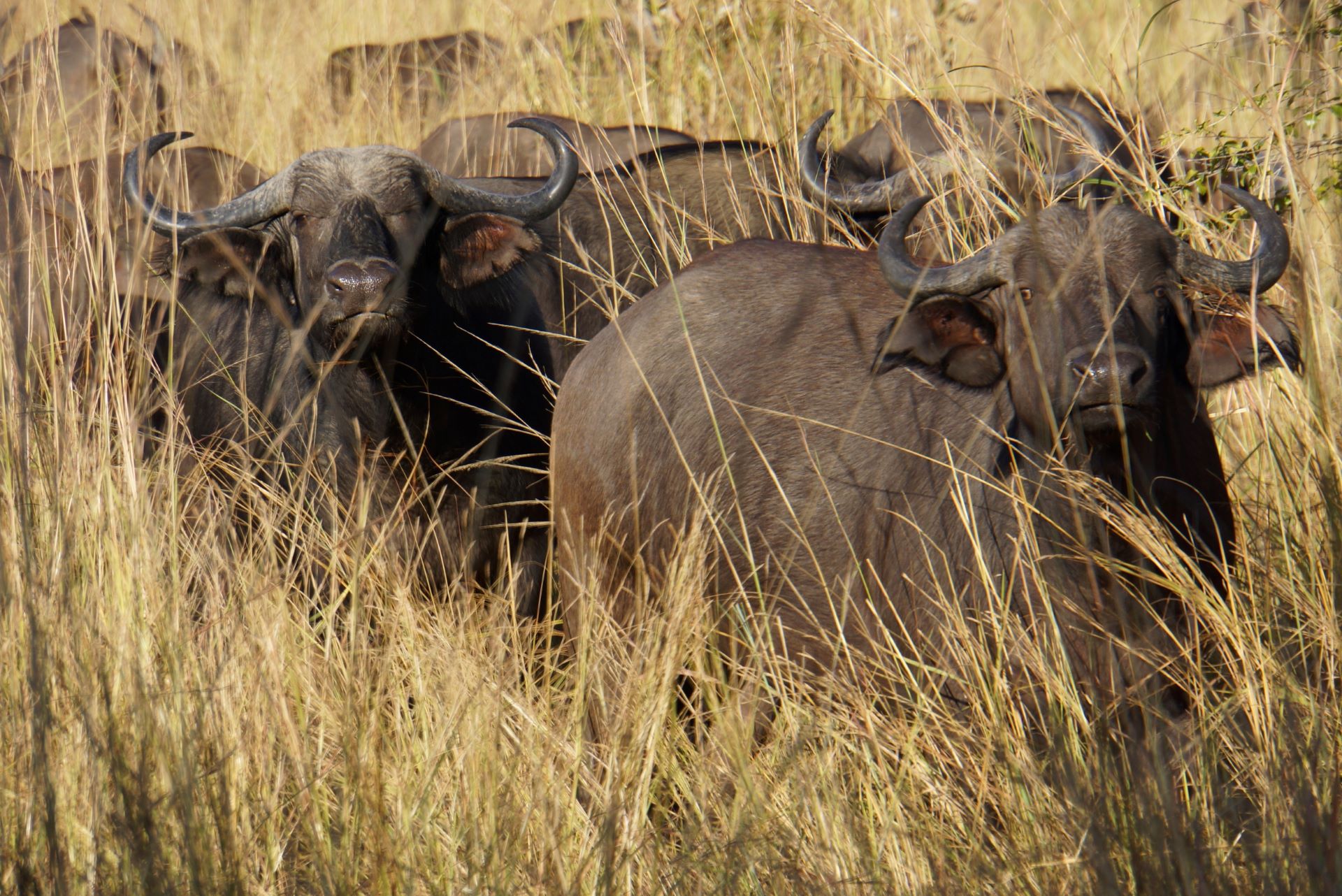At Natural Habitat Adventures, conservation isn’t just a mission statement—it’s the guiding principle behind every journey we design. On our Secluded South Africa safari, guests explore protected national parks and private reserves where wildlife roams freely and tourism supports vital conservation initiatives aimed at protecting these landscapes for generations to come.
Protecting Africa’s Big Five
South Africa is home to the Big Five: rhino, elephant, leopard, lion and Cape buffalo. Of these, all but one are listed as endangered or vulnerable by the International Union for Conservation of Nature (IUCN). Conservation travel plays a critical role in safeguarding these iconic species and the wild ecosystems they inhabit. Nat Hab’s collaboration with World Wildlife Fund places travelers on the front lines of conservation efforts, with daily excursions that explore the challenges—and victories—of species protection.
(function(d,u,ac){var s=d.createElement(‘script’);s.type=’text/javascript’;s.src=’https://a.omappapi.com/app/js/api.min.js’;s.async=true;s.dataset.user=u;s.dataset.campaign=ac;d.getElementsByTagName(‘head’)[0].appendChild(s);})(document,123366,’dv1qoksmccozaltlhbpv’);
During our Secluded South Africa safari, guests often see both black and white rhinos, animals whose futures remain uncertain. At the start of the 20th century, Africa’s black rhino population was around 100,000. Today, fewer than 5,630 remain. Once thought extinct, white rhinos were rediscovered in 1895, and their population now stands at approximately 19,600 to 21,000.
Their modest recovery is thanks to strict protection in reserves and targeted anti-poaching efforts—both heavily supported by safari tourism. Although progress has been made, black rhinos remain critically endangered, and white rhinos are listed as near threatened.
Elephants, leopards and lions also face immense pressures from habitat loss, poaching and human-wildlife conflict. Each encounter on safari becomes an opportunity to understand and support conservation at work.

Black Rhinos in the Marataba Private Reserve
Marataba Private Reserve, once little known, began as a partnership between the South African government and Dutch philanthropist Paul Fentener van Vlissingen at the request of President Nelson Mandela. Their goal: expand protection within the Marakele National Park.
Today, South Africa is home to 80% of Africa’s rhinos. In the 1990s, there were fewer than 2,500. Now, more than 5,000 live within the country. Marataba is a leader in rhino conservation, with rhinos reintroduced to five provinces.
WWF’s Black Rhino Range Expansion Project has established new populations by translocating rhinos from well-managed parks to suitable habitats where they were previously absent. Since 2012, the program has moved rhinos to 11 locations, with more than 70 calves born into these new populations.
Marataba Safari Lodge offers exceptional comfort amid a pristine wilderness setting, with just one guest bed for every 1,000 acres. Black and white rhinos thrive here, often seen on foot during guided bushwalks. Other frequent visitors include giraffes, zebras, wildebeests and hundreds of bird species. Elephants are known to swim in nearby waterholes, and leopards occasionally pass through camp.
Strict limits on the number of vehicles—only five permitted at a time—ensure an uncrowded experience. The only other vehicles guests might see belong to the dedicated anti-poaching teams patrolling the 57,000-acre reserve.

© Mark Hickey
Elephants and Leopards in the Private Madikwe Game Reserve
Madikwe Game Reserve, established in 1991 on reclaimed farmland, is one of South Africa’s great conservation success stories. Hundreds of miles of fencing were removed, and more than 8,000 animals were reintroduced during Operation Phoenix—the largest wildlife relocation in history. Species including lions, elephants, giraffes, African wild dogs and hyenas now thrive in the 185,000-acre reserve.
Madikwe’s model benefits both wildlife and the surrounding communities. A share of tourism revenue supports neighboring villages, and the reserve prioritizes local employment.
Madikwe’s original population of 100 elephants has grown to more than 1,200—now the highest elephant density of any reserve in the country. Africa’s savanna elephants are endangered, and their forest-dwelling cousins are critically endangered. Madikwe offers frequent sightings of these gentle giants, often at close range.
One current conservation initiative is developing a wildlife corridor between Madikwe and Pilanesberg National Park, nearly 50 miles away. The corridor would allow elephants to migrate to areas with fewer individuals, supporting more sustainable population distribution.
Madikwe is also a stronghold for African leopards, the most elusive member of the Big Five. While still difficult to spot, leopards here are less wary of vehicles than in busier parks, making sightings more likely. African leopards have lost 67% of their historical range, but Madikwe—once farmland—now offers them safe refuge.
Other highlights include a growing cheetah population, hundreds of giraffes and endangered African wild dogs, also known as “painted wolves” for their uniquely patterned coats.

Lions and Cape Buffalo in the MalaMala Game Reserve
MalaMala is one of South Africa’s oldest and largest game reserves. Its fenceless boundary with Kruger National Park creates a vast expanse of protected wilderness for lions, Cape buffalo and more to roam freely.
Currently, four lion prides and two male coalitions are commonly sighted in MalaMala. Males defend territories and females raise cubs in the safety of these groups. Guests staying at MalaMala Main Camp, along the Sand River, often witness the drama of daily life—whether it’s lions drinking, hunting or challenging rivals.
Lions have vanished from much of their historic range. Their numbers have declined by roughly 40% in just three generations. Today, an estimated 16,500 to 30,000 wild lions remain across Africa. South Africa is one of only seven countries where wild lions still persist.
Cape buffalo, while not endangered, are anything but tame. Weighing up to 1,900 pounds and capable of charging at 35 mph, these formidable animals are a key member of the Big Five. MalaMala’s buffalo herd exceeds 1,200 individuals, often seen feeding at dams or wallowing in the mud.

Travel with Purpose: Conservation-Focused Safari Experiences
Nat Hab’s Secluded South Africa safari offers more than spectacular wildlife—it delivers a profound connection to the land and its conservation story. These are wild places where nature leads, and the presence of guests directly supports their preservation.
From rhino reintroduction in Marataba to elephant corridors in Madikwe and lion research in MalaMala, our safaris immerse travelers in living conservation success stories. Each reserve tells a unique tale of resilience, and your presence helps write the next chapter.
The post Conservation and the Big Five on a South Africa Safari first appeared on Good Nature Travel Blog.